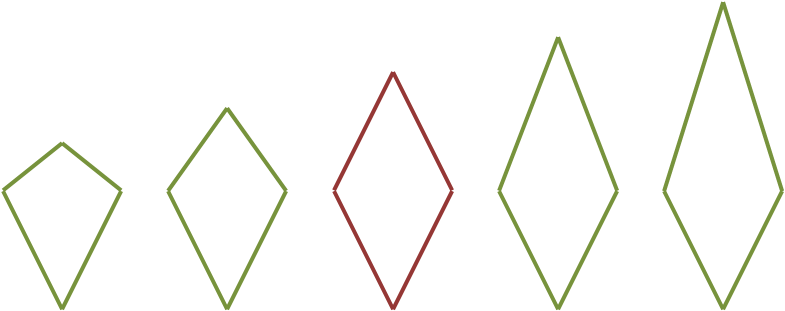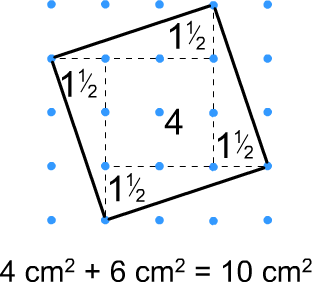Or search by topic
Number and algebra
Geometry and measure
Probability and statistics
Working mathematically
Advanced mathematics
For younger learners
Completing Quadrilaterals



- Problem
- Getting Started
- Student Solutions
- Teachers' Resources
Special Cases
How do you define a rectangle? There are lots of possible definitions, such as:
A quadrilateral with four right angles.
Does a square satisfy this definition?
Answer: yes!
This means that a square is a special type of rectangle: it meets all of the criteria for a rectangle but has other special properties. Take a look at these rectangles:

One of these is special, and is given the extra name of a square, but it is still a rectangle. It is a special case of a rectangle.
Notice that all squares are rectangles, but not all rectangles are squares. Think about the right-hand rectangle above.
Here are some other examples of special cases:

These are a collection of rhombuses, one of which is also a square.

These are a collection of kites, one of which is also a rhombus.

This is a collection of parallelograms, one of which is also a rectangle.
Two standard methods for working out the areas of tilted squares, which may help to work out the areas of the quadrilaterals:
Splitting the tilted square into right-angled triangles and squares and adding the areas of the different parts:

Boxing in the square, working out the area of the box and subtracting the areas of the unwanted right-angled triangles:

You may also like
Linkage
Four rods, two of length a and two of length b, are linked to form a kite. The linkage is moveable so that the angles change. What is the maximum area of the kite?
Making Rectangles, Making Squares
How many differently shaped rectangles can you build using these equilateral and isosceles triangles? Can you make a square?
The Cyclic Quadrilateral
This gives a short summary of the properties and theorems of cyclic quadrilaterals and links to some practical examples to be found elsewhere on the site.

